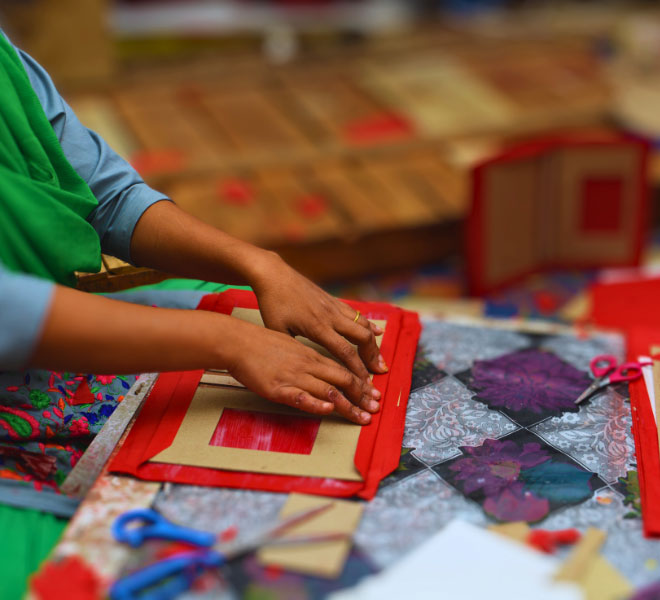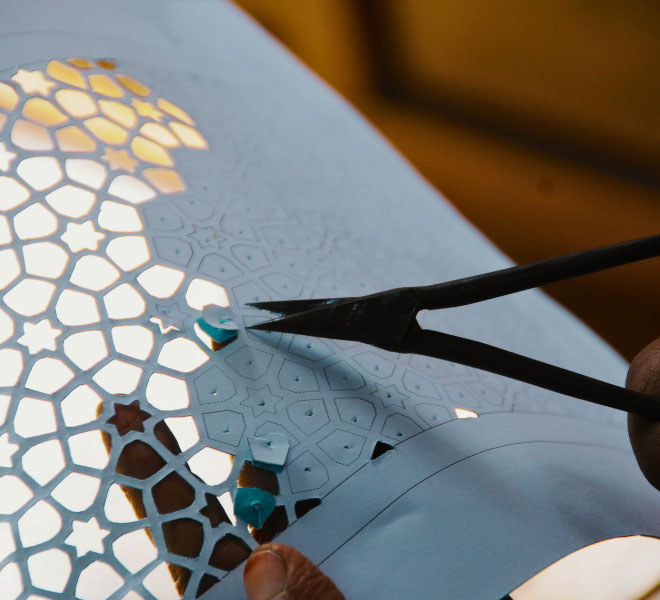
Sanjhi
Sanjhi is a paper art is a traditional form of stencilled paper cutting that originated in Mathura, Uttar Pradesh, considered to be the home of Lord Krishna, as a conduit of expression for the artists’ devotion to Lord Krishna. Traditionally, motifs from the Krishna stories were created in stencils and were used to decorate spaces during the festive season. The cutting process requires enormous skill, concentration, and patience, and fine details are achieved using specially designed scissors. At one time, this art was believed to be practised extensively over Rajasthan, Madhya Pradesh and Gujarat, but now it survives in Mathura.
The Sanjhi artisans of Insha-e-Noor were trained under the National award winner Master Sanjhi Craftsman from Mathura. They use intricate patterns from Humayun’s Tomb, other local monuments, and other motifs to create contemporary products by practising this remarkable craft. Insha-e-Noor is proud to do its bit to keep this dying art alive.
Crochet
Crochet, originated from the word croc, or croche, the Middle French word for hook, is the art of creating fabric from yarn or other material strands using a specialised needle called a crochet needle or crochet hook. According to the American crochet expert and world traveller Annie Potter, the modern art of actual crochet as we know it today was developed during the 16th century, but it is generally said that there is no convincing evidence as to how old the art of crochet might be or where it came from.
The technique essentially involves working yarn into loops to form a smooth chain, forming the basis for complex patterns. What began as a technique for practical purposes like making strips of cloth for trapping animals, fishing nets, etc., by the men in the early centuries, crochet has evolved a great deal, taking off as a whole new free-form means of expression today.
The crochet artisans of Insha-e-Noor use this ancient craft to create colourful contemporary products inspired by the patterns found in the monuments in the Nizamuddin area and Sunder Nursery.
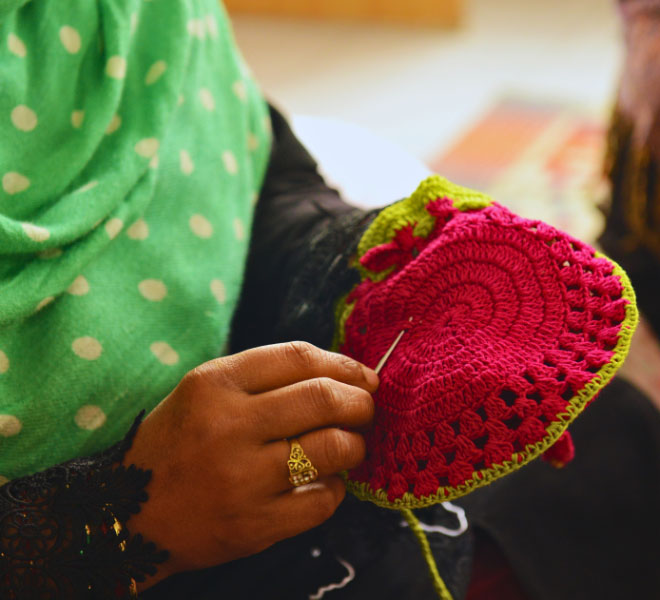
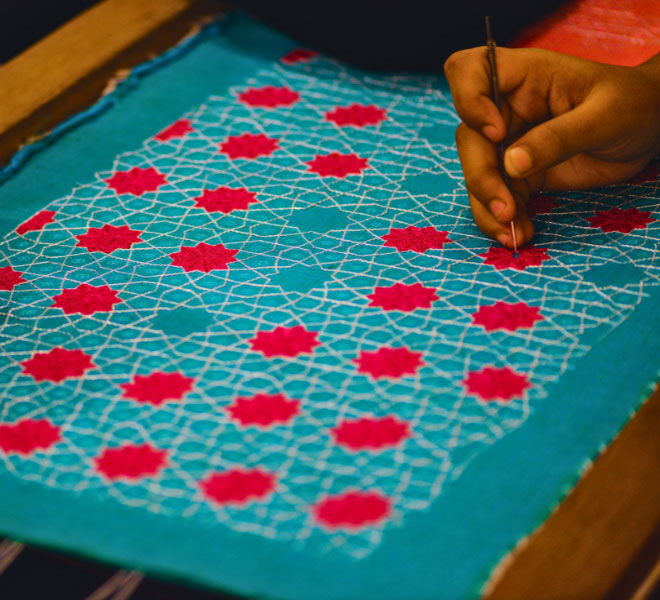
Aari Embroidery
The word ‘aari’ is derived from ‘aar’, which in Hindi means hooked needle, a special kind of needle used to do the embroidery. Aari embroidery, tracing its origins to the 12th century, was a court embroidery done by male artisans exclusively for royalty. It was not specific to any community. Aari had a strong presence in the Mughal court and continued to enjoy popularity during the British Raj when the European elite also became its patrons in addition to royalty.
Given its origins, this delicate embroidery was used to create highly refined and elaborate motifs. Aari embroidery was and still is considered one of the most intricate forms of needlework and can be done with many embellishments like zari, mirror work, stonework, etc.
Insha-e-Noor artisans practice aari embroidery using several motifs, including jali patterns from the monuments in and around Nizamuddin basti and floral patterns from Sunder Nursery, to craft contemporary products.
Supporting Skills
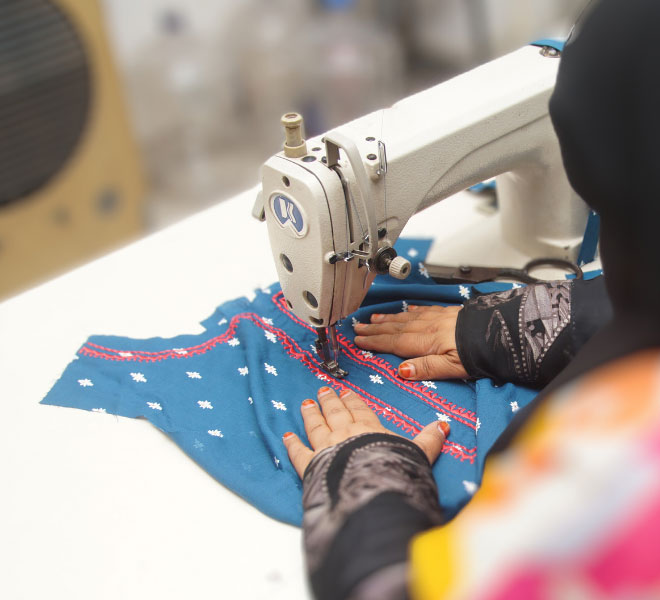
Garment Construction
The garment construction group is a supporting pillar of Insha-e-Noor. It comprises around 30 highly skilled women tailors under the supervision of our Master Ji, who weaves magic on fabrics. The space is filled with the rhythmic whir of sewing machines, with needles dancing across intricate patterns and exotic stitches.
The garment construction artisans work on job-work orders from design houses and brands nationwide. They also produce and finish our in-house products like cushion covers, masks, bags, stoles, etc.
Binding and Packaging
The latest addition to the skill basket of Insha-e-Noor, the binding and packaging unit, was set up to ensure that we have control over the entire production cycle of products. Before that, Insha-e-Noor used to outsource the finishing of some products like notebooks, lamps, tealights, etc., which often became the reason for lapses in quality and increased costs. Hence, a group of women from Nizamuddin were trained in different kinds of binding, lamp making, etc.
The members of this unit are also highly skilled in making packaging products like boxes, paper bags, folders and more. Moreover, watching women operating a massive industrial paper-cutting machine is a highly exhilarating, empowering and rare sight.
